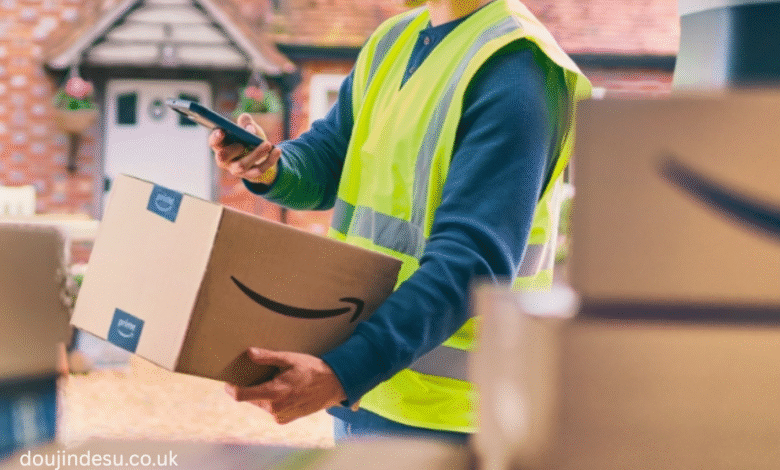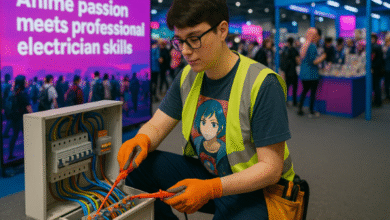All About the Is Amazon Flex Worth It? A Real Look at Driving, Earnings, and Flexibility

With the rise of gig economy jobs, many are wondering: is Amazon Flex worth it as a side hustle or even a main source of income? From students to retirees, people are turning to Amazon Flex as a flexible way to make money on their own schedule. But how much does it really pay? What’s the work like? And is it worth your time, energy, and gas?
Why So Many Ask ‘Is Amazon Flex Worth It?’
The question is Amazon Flex worth it is becoming more common as people search for ways to earn extra income without being tied to a rigid schedule. Amazon Flex promises freedom, decent hourly pay, and the backing of one of the world’s largest companies. With increasing living costs, rising gas prices, and the desire for side income, people are turning to this delivery program to see if it fits into their lifestyle. But while it sounds simple—deliver packages and get paid—the reality is a little more complex.
What Is Amazon Flex and How Does It Work?
Amazon Flex is a gig-based delivery program where individuals use their own vehicles to deliver Amazon packages. After downloading the app and passing a background check, drivers can claim delivery “blocks”, which are typically 3–4 hours long. During a block, drivers go to a local Amazon delivery station, scan packages, load them into their car, and then follow app-based directions to deliver them.
The work is straightforward, but success depends on planning routes efficiently, handling packages with care, and dealing with the occasional unexpected hiccup like delayed pickups or hard-to-find addresses. Once completed, drivers can see their earnings and tips, which are usually paid out twice a week.
Who Is Amazon Flex Designed For?
Amazon Flex is ideal for those who want to work independently. Gig workers, students, stay-at-home parents, freelancers, and retirees often find it fits well into their lives. The app’s block-based system means there’s no long-term commitment, making it perfect for people with fluctuating schedules.
Drivers who enjoy solo work, control over their time, and being on the road tend to thrive. It’s not the best fit for people who dislike driving or need consistent, full-time income, but for flexible part-time earnings, it has real appeal.
A Day in the Life of an Amazon Flex Driver
A typical Amazon Flex shift starts with claiming a block in the app. You drive to the designated Amazon station, check in, scan and load packages into your car, and then follow GPS directions to complete deliveries. The app gives you all the information needed—addresses, number of stops, and any special instructions.
Most routes include 20 to 40 deliveries depending on your region and the type of block (standard, Prime Now, or Amazon Fresh). The day may involve dealing with traffic, weather, customer delivery preferences, and occasionally delivering to gated or apartment communities.
Drivers need to be organized, efficient, and safety-conscious, as time management impacts your success and earnings.
Is Amazon Flex Worth It for the Pay?
The biggest question: is Amazon Flex worth it for the money? Earnings typically range from $18 to $25 per hour, but that’s before expenses like gas, maintenance, and taxes. Some high-demand areas and delivery types (like Amazon Fresh or Whole Foods) offer bonuses or higher rates.
Factors influencing pay include:
- Time of day (peak blocks often pay more)
- Location (urban areas may pay better but have more traffic)
- Block length
- Tips (only included in some delivery types)
While some drivers hit $100 in a single shift, others report earnings closer to minimum wage after costs. That’s why understanding your local market and planning routes smartly is key.
How Scheduling and Flexibility Work
One of the best parts about Amazon Flex is its true flexibility. Drivers can open the app at any time to claim available blocks. If nothing’s available, they can refresh the app or check later. This freedom is a major draw, especially compared to traditional jobs.
However, blocks can be competitive to grab, especially during peak seasons or in high-density areas. Flexibility is real—but so is the need for fast fingers and quick decision-making when it comes to scheduling.
Pros of Working with Amazon Flex
There are many upsides to driving for Amazon Flex:
- No boss or manager hovering
- Flexible schedule you set
- Decent pay without needing experience
- Quick deposits (twice a week)
- Low barrier to entry
Many drivers also enjoy the chance to be outside, listen to podcasts, and explore new neighborhoods—all while getting paid.
Cons of Being an Amazon Flex Driver
Despite its advantages, Amazon Flex has drawbacks:
- Wear and tear on your personal vehicle
- Gas costs, especially in large delivery areas
- No guaranteed hours or benefits
- Stress from tight schedules or missed deliveries
- Customer complaints and package scanning issues
Some also find the app occasionally buggy or frustrating, especially when blocks vanish quickly or routing glitches occur.
How Amazon Flex Compares to Other Gig Jobs
When comparing Amazon Flex to DoorDash, Instacart, or Uber Eats, each has pros and cons:
- Amazon Flex tends to pay more per hour but requires more effort and planning.
- Food delivery gigs offer more frequent but smaller tasks, with tips being a larger portion of income.
- Instacart involves shopping, which some people find more stressful than driving.
Flex can be more consistent in certain areas, but other apps might offer better daily earnings depending on market demand.
Real Stories: Drivers Share Their Experience
Many drivers describe Amazon Flex as a great side hustle—something to supplement income, not necessarily replace it. One part-time driver in Texas shared that she earns around $500 a week doing evening blocks after her full-time job. Another in New York said he prefers it over rideshare apps because there’s no passenger interaction and he can focus solely on deliveries.
However, others mention feeling overwhelmed during holiday seasons or facing long drives with poorly grouped routes. The key message: learn your area, be strategic, and know your limits.
Hidden Costs and Considerations
It’s easy to overlook the hidden costs of driving for Amazon Flex:
- Fuel costs can eat into your earnings quickly
- Regular maintenance (tires, oil, brakes) increases with more miles
- Self-employment taxes are your responsibility
- Insurance may need to be upgraded for delivery use
Keeping track of expenses and using tax deduction tools is essential if you want to understand your real profit margins.
Tips to Maximize Your Amazon Flex Earnings
To get the most out of Flex, try these tips:
- Work during peak hours (early morning, weekends, holidays)
- Target areas close to distribution hubs to cut down drive time
- Keep your car organized for faster drop-offs
- Use fuel rewards and route optimization apps
- Track mileage and expenses for tax write-offs
Many successful drivers treat Flex like a mini business—tracking earnings, planning routes, and continuously improving their system.
Conclusion
So, is Amazon Flex worth it? It depends on your goals. For those needing flexible income, who don’t mind driving and can manage costs, it’s a solid option. While it may not replace a full-time salary, it offers freedom and control many traditional jobs don’t. As long as you’re aware of the expenses and approach it smartly, Amazon Flex can be a rewarding gig.
Frequently Asked Question
How much can I make with Amazon Flex?
Most drivers earn $18–$25/hour before expenses like gas.
Is Amazon Flex good for part-time work?
Yes, it’s highly flexible and great for side income.
Do I need a special car for Amazon Flex?
No, but a mid-size sedan or larger vehicle is recommended.
How do I get blocks on Amazon Flex?
Use the app to claim available time slots for delivery.
Are there benefits or insurance with Amazon Flex?
No, you’re an independent contractor, so you must handle insurance and taxes yourself.



